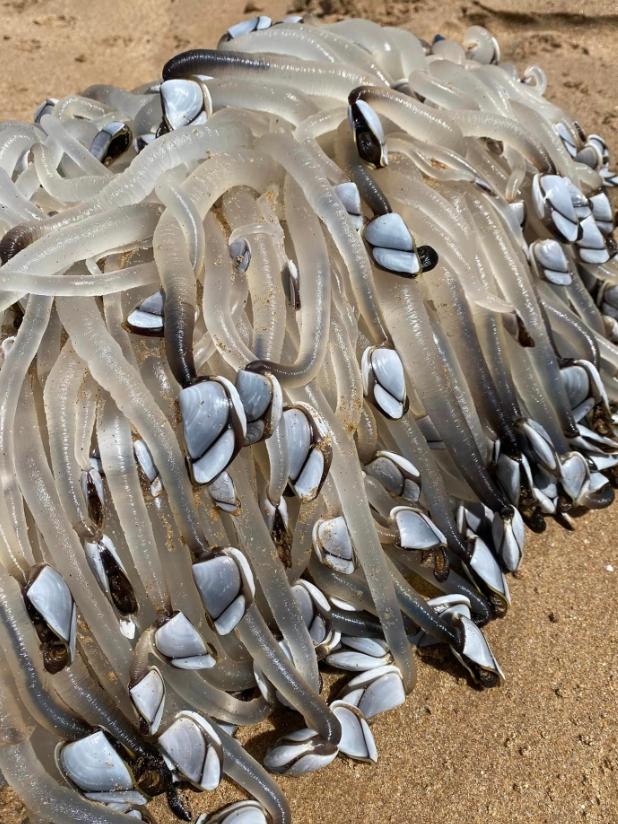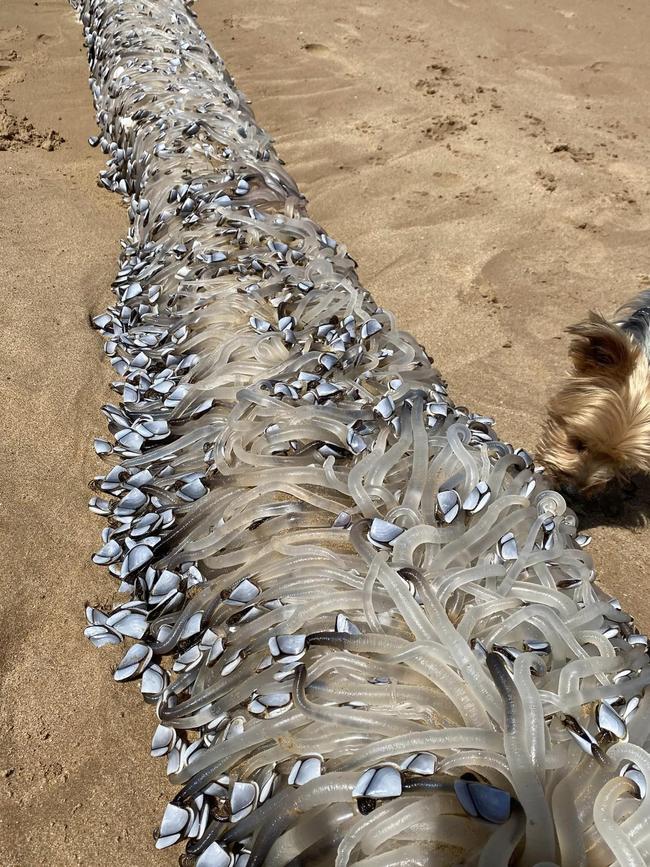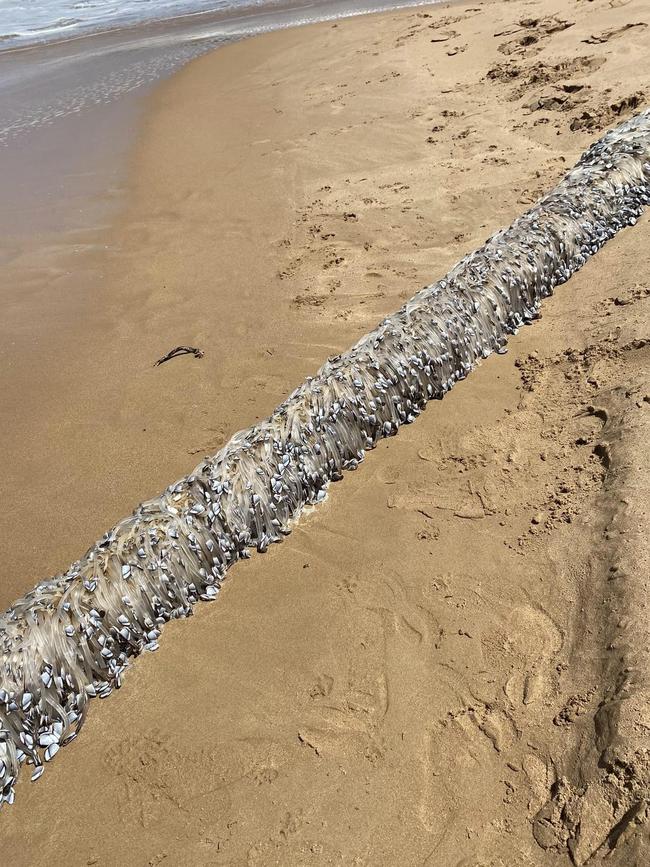Goose barnacles washes up on Port Elliot beach
It’s the weird creature of the deep few locals report seeing and has sparked plenty of conversation, but it turns out it’s not that uncommon. See the incredible video.
SA News
Don't miss out on the headlines from SA News. Followed categories will be added to My News.
An incredible example of a natural phenomenon has washed up on a Port Elliot beach – and got plenty of locals talking.
Vicki came across the peculiar sight at Horseshoe Bay on Monday, snapping some photos and posting them to a local community social page.
It sparked plenty of commentary about what the thing could be, with its long translucent stalks with what appear to be shells at the end.
“Over 26 years walking Horseshoe Bay – I’ve never seen anything quite like this before,” she posted to the group.
“Nature never ceases to amaze!”


Commenters were quick to chime in with both honest – and accurate – answers on what it was, as well as others seemingly getting curious about at the unusual creature.
It turns out it is goose barnacles, but a large specimen.
“Wow, it looks long judging by scale of dog,” one person posted.
“That might just be the freakiest thing I’ve ever seen,” another said.
Another local chimed in: “Seen them washed up on Goolwa Beach heaps. Apparently they taste similar to razor fish.”
Another person added: “Grab them, paella heaven. So rare. You will never get cockles like that! Must have been floating rope.”
University of South Australia marine ecologist Dr Zoe Doubleday said it looked like the mass “broke off the mothership” and floated to shore.
”I’ve never seen anything like it and it just must be an old pylon from a jetty or some piece of marine infrastructure that has been in the water for such a long time to grow a dense cluster of barnacles,” she said.
“It’s been there for a long time.”
Dr Doubleday said the size, density and volume of barnacles was unusual.
She explained there were two types of barnacles - acorn varieties such as those that grew on rocks, whales and ship hulls, and goose barnacles such as that which washed ashore in Port Elliot.
“They’re strange because barnacles are actually crustaceans but they’re a completely different group of animals - more closely related to a prawn than a cockle,” Dr Doubleday said.
She said she had never seen a specimen that big, and was surprised at the barnacle’s length and mass.
The Australian Museum says goose barnacles have “long rubbery stalks” and are usually found in groups either attached to floating objects, on wharves and piers, or washed up on the shore.
Goose barnacles and acorn barnacles are the two major types found in Australian waters.
“Both have a tough shell covering on the outside, which may lead some people to believe that barnacles are more closely related to snails than they are to crabs and lobsters,” the website states.

“However on the inside barnacles are very much crustaceans, having jointed legs, which they use to catch small particles of food.”
Goose barnacles live on intertidal beaches, and can be found in South Australia, Queensland, New South Wales, and Western Australia.
For the adventurous foodies, the internet has plenty of recipe suggestions on how to prepare goose barnacles, most which revolve around boiling the creatures and then adding herbs and spices.
The Australian Museum says a legend evolved during the Middle Ages that goose barnacles were actually goose eggs.
“It was believed that when geese disappeared in winter, their ‘eggs’ (or goose barnacles) floated back to shore,” the website states.




